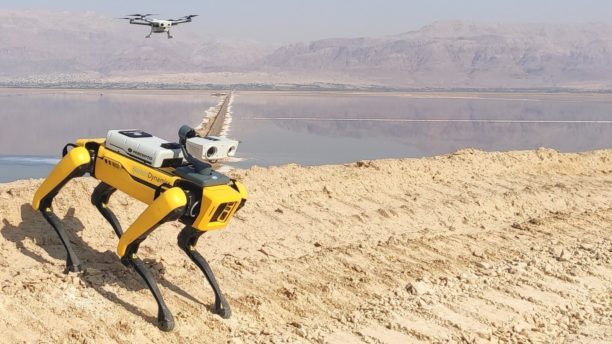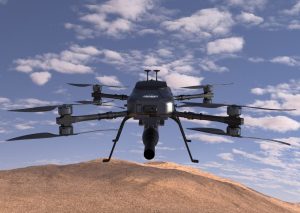U.S. Robotics Leaders Demand National Strategy Amid Growing Global Competition
Industry insiders are urging the creation of a national robotics strategy for the United States to maintain its competitive edge in the booming global robotics sector, as reported in a recent Associated Press article.
Prominent executives from major robotics companies, such as Tesla, Boston Dynamics, and Agility Robotics, convened on Capitol Hill this week to showcase their innovations and advocate for increased federal support. This appeal is set against the backdrop of China’s strategic prioritization of intelligent robotics, backed by substantial investments in robotics and artificial intelligence (AI).
Renewed Push for Robotics Innovation
Jeff Cardenas, the CEO and co-founder of Apptronik, reiterated the historical significance of American leadership in robotics, recalling how General Motors introduced the first industrial robot in a U.S. facility in 1961. Cardenas cautioned, however, that the U.S. has fallen behind over the decades, with Japan and Europe emerging as frontrunners in industrial robotics.
“The forthcoming robotics revolution will be fueled by artificial intelligence, and the outcome is uncertain,” Cardenas stated in an interview referenced by the Associated Press. “The U.S. possesses the potential to prevail… but a national strategy is essential for us to innovate and maintain our leadership.”
Industry-Led Recommendations for Federal Action
The Association for Advanced Automation, a trade organization representing robotics and AI interests, advocates for a comprehensive national robotics strategy aimed at enhancing production capabilities and fostering technology adoption in U.S. firms. The association raised concerns, emphasizing that without proactive governmental measures, the U.S. risks falling behind in both robotics and AI.
Several policy initiatives have been proposed to that end:
- Establishment of a federal office focused on robotics development
- Tax incentives to spur the commercial uptake of robotic systems
- Government-funded workforce training and education programs
- Enhanced support for academic research and commercial innovation
The mounting global competition, along with rapid technological advancements, accentuates the necessity for a unified national response, the group asserts.
Addressing Unmanned Systems and U.S. Manufacturing Capabilities
The call for a national robotics strategy is particularly relevant as it intersects with ongoing discussions regarding unmanned systems, including drones. Recent scrutiny of Chinese-made drone technologies by U.S. lawmakers, prompted by national security concerns, has intensified calls to limit their use in federal and commercial contexts. Nevertheless, the U.S. is still striving to establish a robust domestic drone manufacturing ecosystem, leaving users with limited options and elevated costs for American-made alternatives. Incorporating unmanned systems into a broader national robotics framework could accelerate production, bolster innovation, and enhance the availability of secure options for end users.
China’s Ambitious Investments
China has already positioned itself as the largest market for industrial robots globally, making substantial strides in next-generation robotics technologies. According to the International Federation of Robotics based in Germany, around 1.8 million robots were operational in China’s industrial sector as of 2023.
Recent reports indicate that China has sanctioned a $138 billion state-sponsored venture capital initiative emphasizing robotics, AI, and advanced technologies. Firms such as Unitree have begun to attract public attention by unveiling humanoid robots at major national events.
In his annual address, Chinese Premier Li Qiang highlighted the country’s commitment to integrating digital technologies with manufacturing, including advancements in intelligent robots and connected electric vehicles.
U.S. Strengths and Challenges
Both lawmakers and industry leaders concur that the United States currently retains advantages in AI and innovation. “It is crucial that we sustain our innovative drive and foster a culture of entrepreneurship,” stated Representative Raja Krishnamoorthi (D-IL).
Jonathan Chen, an engineer involved in Tesla’s Optimus project for humanoid robots, remarked that while innovation is vital, the capacity for manufacturing will ultimately determine which countries can effectively scale and deploy these technologies. “Producing robots is one aspect; the real question is who can scale their production?” Chen noted.
Future Prospects
Companies like Apptronik, with backing from Nvidia and Google, are investing in humanoid robots to engage the public and inspire future engineers. “Humanoids will play pivotal roles, both practically and in sparking public imagination,” Cardenas concluded.
As robotics emerges as a battleground for technological dominance, U.S. companies and policymakers are under mounting pressure to formulate a unified national strategy that encourages innovation, enhances production capabilities, and develops a skilled workforce.
Want the latest DRONELIFE updates in your inbox every weekday? Sign up here.
For more insights, check out these related articles:
- America Is Flying Blind: Why We Need a National Drone Strategy Now
- Oransi Inc.: The U.S. Company Poised to Take on China’s Drone Motor Industry
- DRONEII: Analysis of China’s Drone Market
Original Article: Link here













